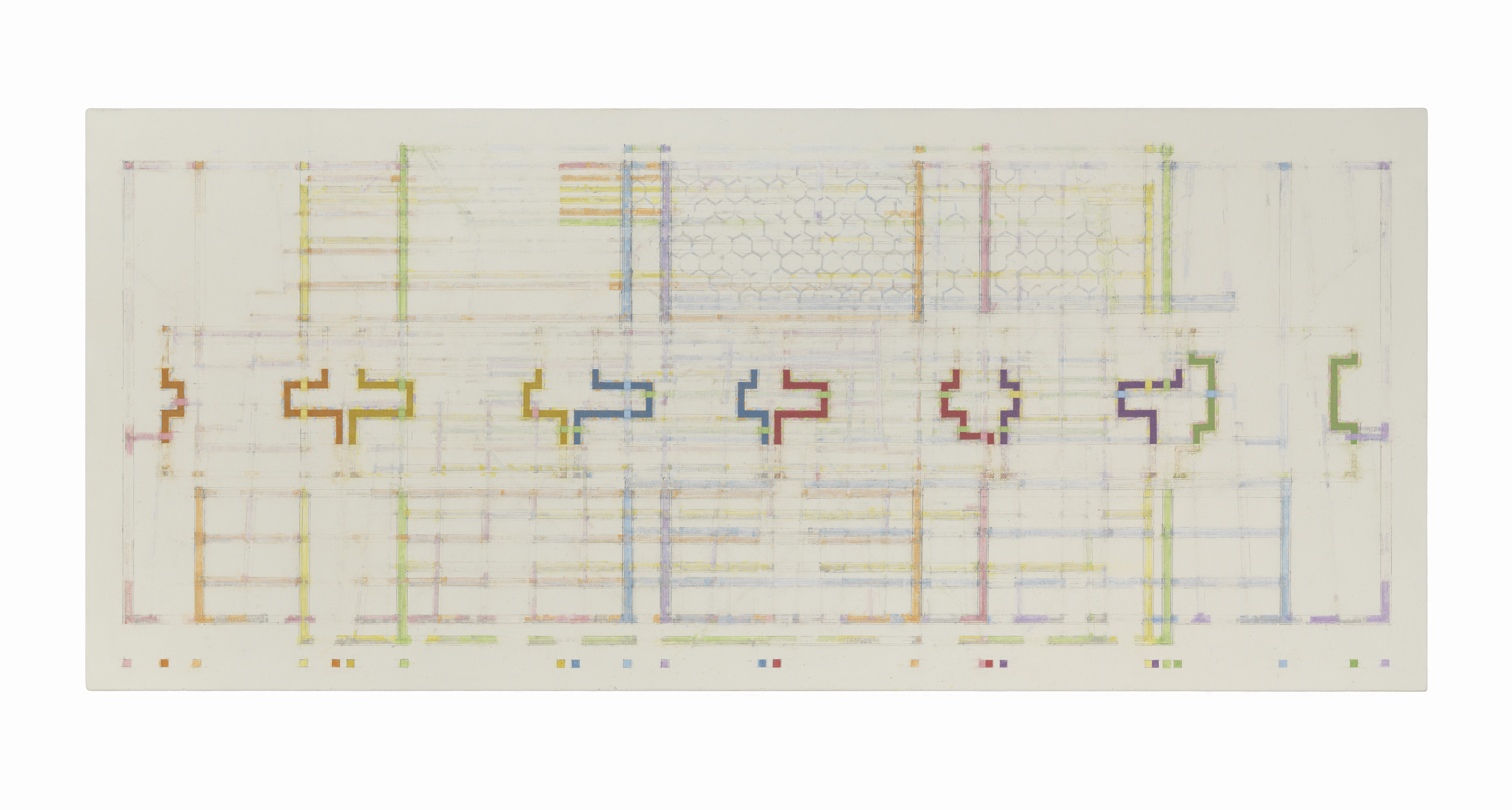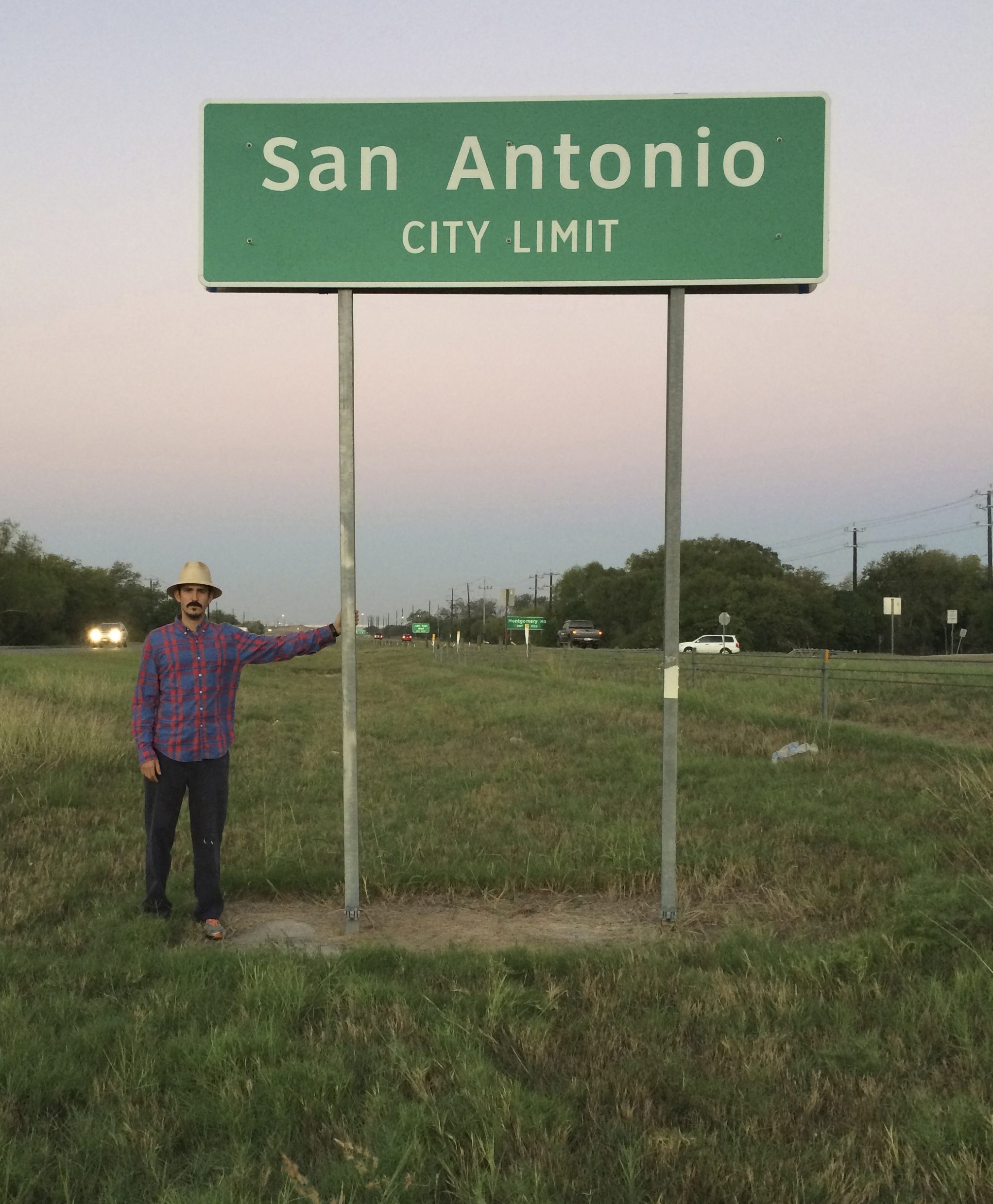 Julia Fish, an American artist whose career spans four decades, is a professor emerita at the University of Illinois at Chicago. Seen here is her work "Threshold – fragments : Matrix [ spectrum with grey ] and Plans [ spectrum : east to west ]." (Courtesy of the artist. Photo by Tom Van Eynde)CHICAGO — DePaul Art Museum presents three new exhibitions this fall organized on the occasion of the Chicago Architecture Biennial. Together, the exhibitions — “Julia Fish: bound by spectrum,” “Architectural Annotations” and “Remember Where You Are” — consider the influence of architecture, geography and place on individual narratives and experiences. The exhibitions will open to the public Sept. 12 from 6-8 p.m. on DePaul University’s Lincoln Park Campus. They will be on view through Feb. 23, 2020.
Julia Fish, an American artist whose career spans four decades, is a professor emerita at the University of Illinois at Chicago. Seen here is her work "Threshold – fragments : Matrix [ spectrum with grey ] and Plans [ spectrum : east to west ]." (Courtesy of the artist. Photo by Tom Van Eynde)CHICAGO — DePaul Art Museum presents three new exhibitions this fall organized on the occasion of the Chicago Architecture Biennial. Together, the exhibitions — “Julia Fish: bound by spectrum,” “Architectural Annotations” and “Remember Where You Are” — consider the influence of architecture, geography and place on individual narratives and experiences. The exhibitions will open to the public Sept. 12 from 6-8 p.m. on DePaul University’s Lincoln Park Campus. They will be on view through Feb. 23, 2020.
‘Julia Fish: bound by spectrum’
Julia Fish, an American artist whose career spans four decades, is a professor emerita at the University of Illinois at Chicago, where she taught from 1989 to 2015. For three decades, she has used her house and its vernacular architecture — a Chicago storefront designed by Theodore Steuben in 1922 — as the basis for a system of mapping color, form and light in paintings and works on paper. “Julia Fish: bound by spectrum” presents a survey of the last decade of the artist’s paintings and works on paper while providing new scholarship around her ongoing project that brings together the disciplines of painting, drawing and architecture. This is the first major museum survey of Fish’s work in more than 20 years, and debuts three new paintings.
Rendering architectural details, specifically thresholds, at actual size and from observation, Fish creates a subjective response to objective information, informed by effects of light in space, time of day, the seasons, cardinal direction, and her own physical vantage point. Fish examines and recontextualizes evidence of her house within paintings, which elude pure abstraction. They are, in fact, depictions of transitional spaces filtered through Fish’s increasingly complex visual logic.
“Fish’s work is paradoxical in that it moves across time, disciplines, media and locations, yet is intense in its focus on one set of forms: six thresholds in her home,” said Julie Rodrigues Widholm, the museum’s director and chief curator and curator of the exhibition. “These are 21st-century paintings of a 20th-century house, informed by Italian Renaissance paintings, cathedrals, poetry, classical music, memories of atmospheric light on the Oregon coast, and her current home in Chicago.”
The exhibition is accompanied by a fully-illustrated catalogue published by DePaul Art Museum, designed by Studio/lab, and distributed by the University of Chicago Press. It includes essays by Widholm, independent curator Kate Nesin, architect Dan Wheeler and author Colm Tóibín, as well as a selection of more than 10 years of previously unpublished studio notes by the artist. The catalogue will be released at the exhibition opening and will be available for purchase for $45.
‘Architectural Annotations’
Accompanying her solo exhibition, Fish has guest curated a selection of works on paper largely from DePaul Art Museum’s permanent collection. “Architectural Annotations” provides insights into Fish’s creative vision and interests and expands on her own practice of rendering architectural space through painting. Fish includes the work of the Burnham Brothers, Douglas Garofalo and Giovanni Battista Piranesi as examples of the impact of encountering and learning from significant architecture in Chicago and Rome.
 In addition to her exhibition, "Julia Fish: bound by spectrum," Fish is guest curating an exhibition titled "Architectural Annotations" for DePaul Art Museum's fall exhibition. Seen here is Giovanni Battista Piranesi's "Venduta della Piazza del Campidoglio." (Collection of DePaul Art Museum, gift of Judge John T. O’Connell, 5013.)The exhibition also features musical annotations inspired by architecture, including American composer Andrew Norman’s “The Companion Guide to Rome” (2006–10), a series of nine musical “portraits” that reflect the experience of visiting architecturally significant churches and basilicas. In this installation, composer and performer Anne Leilehua Lanzilotti presents a selection of annotations and graphic analyses in response to selected scores from “The Companion Guide to Rome.”
In addition to her exhibition, "Julia Fish: bound by spectrum," Fish is guest curating an exhibition titled "Architectural Annotations" for DePaul Art Museum's fall exhibition. Seen here is Giovanni Battista Piranesi's "Venduta della Piazza del Campidoglio." (Collection of DePaul Art Museum, gift of Judge John T. O’Connell, 5013.)The exhibition also features musical annotations inspired by architecture, including American composer Andrew Norman’s “The Companion Guide to Rome” (2006–10), a series of nine musical “portraits” that reflect the experience of visiting architecturally significant churches and basilicas. In this installation, composer and performer Anne Leilehua Lanzilotti presents a selection of annotations and graphic analyses in response to selected scores from “The Companion Guide to Rome.”
“The works on paper that I have selected for ‘Architectural Annotations’ reflects a fortunate circumstance in terms of my own biography — that is, my interest in architecture and architectural drawings, in music, and the invitation to offer a context for the work in DePaul Art Museum’s permanent collection,” said Fish.
‘Remember Where You Are’
The exhibition “Remember Where You Are” presents work by four emerging artists based in San Antonio and Chicago who use performance, sculpture and textiles to make visible untold narratives of heritage and place, while questioning practices of exclusion and erasure. Their works are informed by layering personal and public histories to imagine new methods for navigating the world around us. The exhibition draws its title from a durational work by exhibition artist Jimmy James Canales and the S.U.R.V.I.V.A.L. acronym.
“‘Remember Where You Are’ provides a platform for four emerging artists to share stories about place and identity. Their works speak to a generational shift wherein history and geography are seen as both subject and medium, and can be engaged to create new forms of social commentary,” said Mia Lopez, the museum’s assistant curator and curator of the exhibition.
 Jimmy James Canales uses performance and sculpture to create works about exploration, myth and technology. Seen here is his work, "Remember Where You Are." (Courtesy of the artist.)Artists featured in “Remember Where You Are” include:
Jimmy James Canales uses performance and sculpture to create works about exploration, myth and technology. Seen here is his work, "Remember Where You Are." (Courtesy of the artist.)Artists featured in “Remember Where You Are” include:
-
Jimmy James Canales (American, b. 1985) uses performance and sculpture to create works about exploration, myth and technology. For this exhibition, he’s scheduled to complete a two-day, 27-mile trek across the city of Chicago July 26-27, collecting found materials and creating documentation to be installed in the museum’s galleries.
-
Jenelle Esparza (American, b. 1985) examines the history of cotton and labor in South Texas through photography and textiles. Her recent projects consider the intersections of Mexican and American culture and the implications of generational trauma.
-
Melissa Leandro (American, b. 1989) fuses digital and traditional weaving techniques in fabric works that touch upon painting as well as her experience as the daughter of a domestic worker. Leandro combines colors and patterns that speak to her Costa Rican roots with abstract patterns and found furniture.
-
Emilio Rojas (Mexican, b. 1985) uses his body to address legacies of colonialism and oppression. His current research studies Chicago’s ties to Christopher Columbus from the World’s Fair to the present day, and invites speculation and imagination of alternative histories.
DePaul Art Museum is a world-class museum located in the heart of DePaul University’s Lincoln Park Campus. The museum presents rotating exhibitions of modern and contemporary art and houses a permanent collection of more than 3,500 objects, with strengths in local and international modern and contemporary art.
Located at 935 W. Fullerton Ave., the museum’s hours are 11 a.m. to 7 p.m. Wednesday and Thursday, and 11 a.m. to 5 p.m. Friday, Saturday and Sunday. The museum is closed Monday and Tuesday. Admission is free. Additional information is online at
artmuseum.depaul.edu or by calling 773-325-7506.
###
Source:
Julie Rodrigues Widholm
773-325-7229
Media Contact:
Russell Dorn
312-362-7128